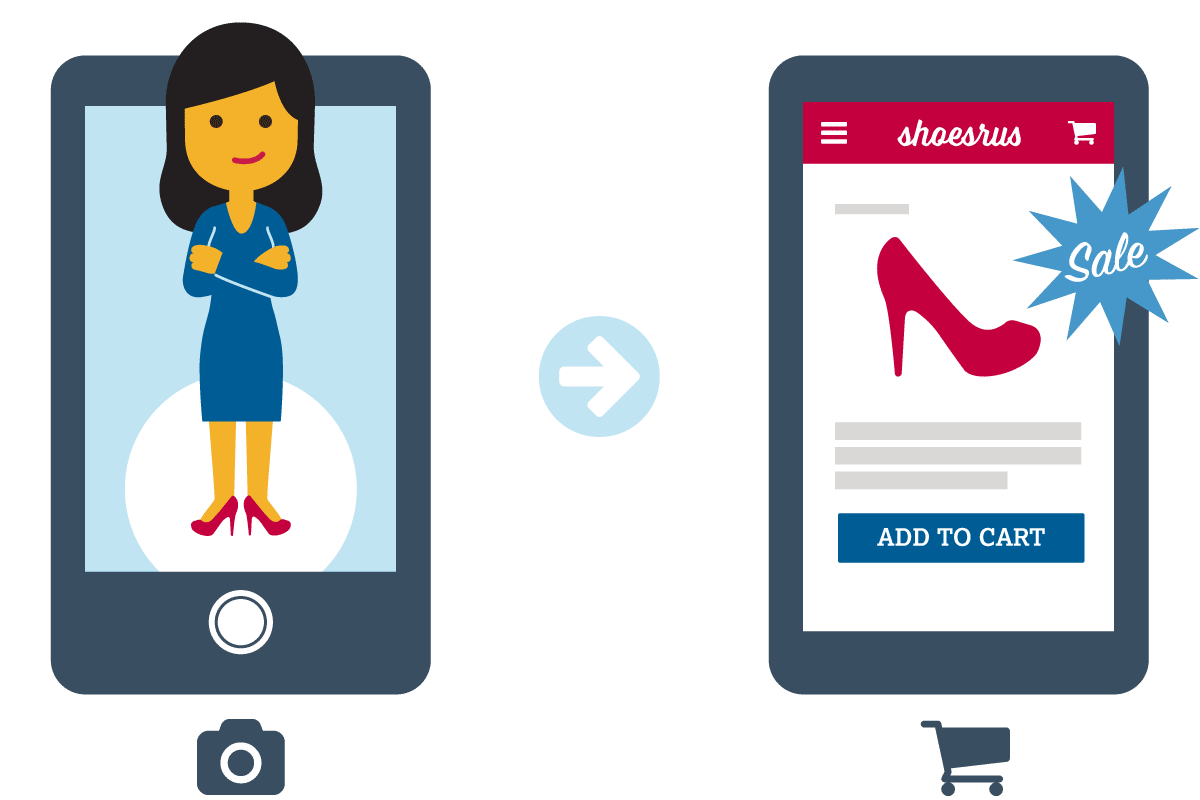How Visual Search Will Revolutionize Online Shopping

When’s the last time you made a purchase based solely on a written description of an item, without seeing at least a picture of it? If you want a particular haircut, are you more likely to try to describe it in detail to your hairdresser, or simply bring a photo to your appointment?
In both cases, an image is more effective than words because our minds are built to process visual information. Images get people’s attention, evoke an emotional reaction, and improve comprehensive and retention of information.
This preference for visual content is already apparent online. The fastest-growing social network, Instagram, is image-based. Infographics are liked and shared three times more than other types of content. Tweets that include a photo get 150% more retweets that those without.
Visual content is even starting to infiltrate traditionally text-based search, especially when it comes to online shopping. According to a recent study by eMarketer, 72% of U.S. Internet users regularly or always search for visual content before making a purchase. Major players including Google, Bing, and Pinterest have already capitalized on the trend with new visual search products.
Visual Search on Google, Pinterest and Bing

Unlike with image search, where web searchers use words to find images, visual search lets users actually use an image as a query rather than text—a photo or a rabbit rather than the word “rabbit,” for example.
One of the most recent efforts at visual search is Google Lens, a visual search tool that uses artificial intelligence and machine learning to analyze pictures you take and give you information that is relevant to those images. For example, if you take a photo of a restaurant, Google Lens can not only identify the restaurant, but give you the hours and link to a menu.
Pinterest also has a visual search application, called Lens. According to Pinterest, Lens users have doubled in the last six months, and people are now doing more than 600 million visual searches every day with Lens.
With Pinterest’s Lens, users take a photo, then Lens isolates the individual items in the photo and lets users search for related objects. Within the online retail category, visual search can be helpful in that it lets you show the search engine exactly what item you want to buy rather that trying to use words to describe it.
Bing’s visual search, like Pinterest Lens, lets users search for images within images. Unlike Pinterest Lens, which only returns results within Pinterest, Bing searches the entire web. Searchers simply select a photo and tap a magnifying glass to zoom in on a specific object, then Bing displays a selection of related images.
How to Make Your Ecommerce Site Visual-Search Friendly
If you have an ecommerce site, visual search represents the wave of the future for online shopping. Both Bing’s and Pinterest’s visual search engines display search results with links to sites that sell the selected object. Target is already using Pinterest Lens on its site, and other retailers, including American Eagle, Tommy Hilfiger, and Wayfair, are developing visual search applications.
If your website uses images, especially product images, make sure they are optimized for visual search with descriptive filenames, alt tags, schema markup, and metadata. All these pieces of textual information will help visual search engines correctly identify your photos, improve your visual search ranking, and potentially direct searchers to your website to make a purchase.
Visual search isn’t replacing text search yet, but optimizing for visual search will improve your customers’ shopping experience, increase traffic, drive conversions, and put you in a great position to take advantage of the next big thing in search.


